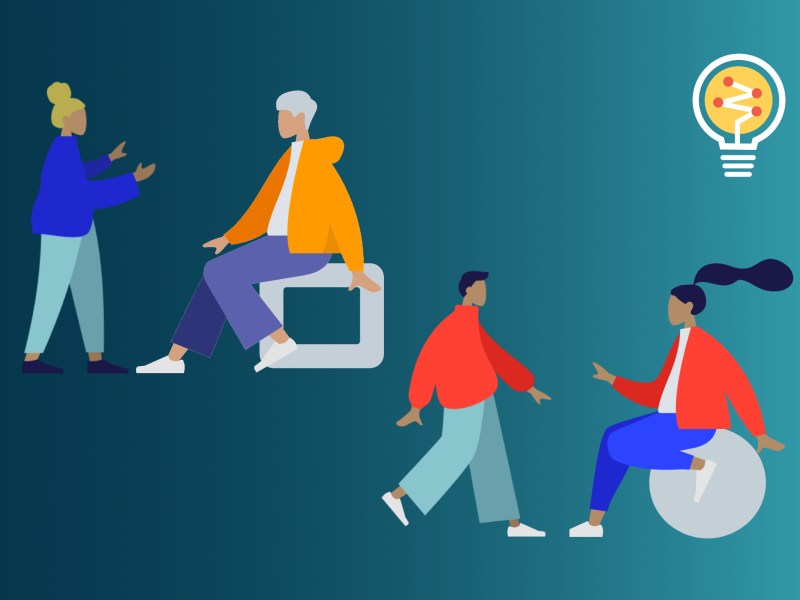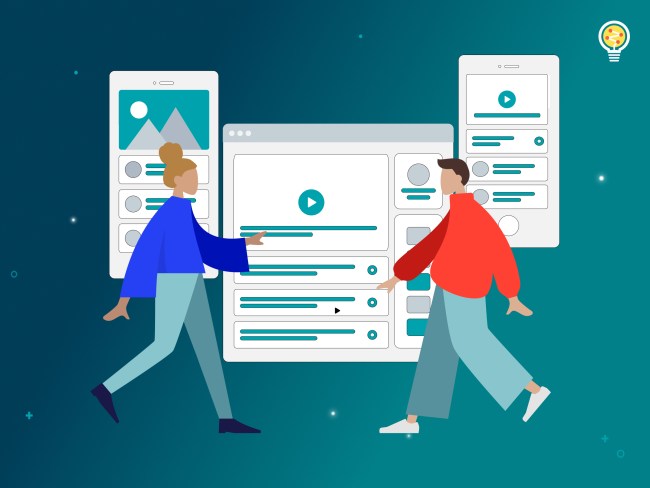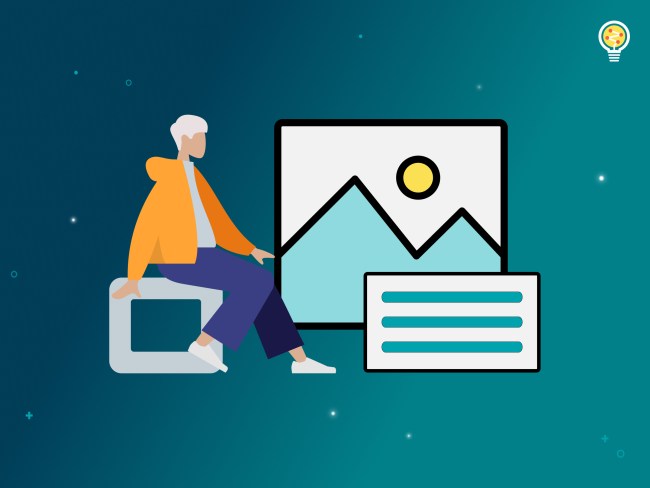Hi folks! This is Nick Croft, Lead Developer with Reaktiv. I’m kicking off a short series on accessible content. Before getting started, let me share a bit about myself. I have been developing with WordPress for over a decade, and today I am a lead developer for Reaktiv Studios, a WordPress VIP Partner. I have created several plugins for WordPress mostly using the Genesis framework as well as custom work for clients and my employer. I am the author of Genesis Explained, a book that focuses on the Genesis theme framework. Lately, I have focused on writing highly efficient code, automating all the things, improving in Javascript, React, security, and accessibility. When I’m not working, I enjoy spending time with my wife, four children, two puppies, and living on a quiet cul-de-sac in the Shenandoah Valley. I also enjoy home improvement projects, hiking, and river activities.
In this part I’m going to cover some reasons why accessibility matters. The goal of this series is to help content creators make accessible content, so I’m mostly focusing on using content tools and not getting into HTML, CSS, and other languages.
This series will be available in video so I can show instead of just tell and the posts will include full transcripts of the video.
Now let’s get into it.
What is Accessible Content?
Right off the bat you might be asking “what is accessible content?” or “why does it matter?” I’d like to address that first.
Accessibility or “a11y” is a concept that means making websites accessible or inclusive for all users regardless of their abilities.
Bonus info. “A11y” is just shorthand for “accessibility.” It is “a” for the first letter in accessibility and “y” for the last letter. The “11” is for the total number of letters.
Now back to why accessibility matters.
Most often we think of this as making it work for blind or low vision users. That’s certainly a big part of it. However, it also impacts other users including those with hearing impairments, motor limitations, and cognitive disabilities. For example, complex content with long content blocks and distracting sidebars can make it hard for many users with attention disorders.
Accessible content is important for four primary reasons:
- Currently this makes up over 25% of the users on the internet.
- Aging populations will experience increased disabilities.
- Transitory disabilities – like trying to read content while taking care of a newborn – can affect any user.
- Making a site accessible improves the experience (UX) for 100% of users.
Ideally, we should care because if this affects a single person it matters, but that last point really drives it home. All of your users will have a better experience on your site when you make accessibility a priority.
Let’s talk a bit more about different disabilities and how that affects users ability to interact with your content.
Types of disabilities
A good starting point is to think about big classes like vision, hearing, motor control, and cognitive disabilities. Some accessibility issues are specific to a class while others are more broad and can affect a wider variety of users.
It’s also important to think about disabilities in state. That is to say some people have had a particular disability from birth, or experienced it later in life. There is also the concept of transitory or transitional disabilities. That is a person who is disabled for a period of time. This can be someone who has a broken hand and will likely recover, but while the hand is in recovery the user experiences a motor impairment. They may not be able to operate a mouse as well or use fine touch controls.
Now let’s look at some specific disabilities. I’ll use “stories” to describe a person, because it’s helpful to think about real people, not just disabilities. If you take anything away from this, remember that we are talking about people, not disabilities.
Vision
Often when we think about vision we think about the blind. Today we will talk about color blindness.
Meet Tom. He was born with red-green color blindness. For the most part he isn’t really affected by this. Tom made it through high school and has started his first year of college. One of Tom’s professors put the syllabus on the class group board online. The professor has reading assignments that are required, recommended, and optional. The assignments were given a background color to indicate the status: red for required, yellow for recommended, and green for optional. Tom can see the yellow background, but the red and green backgrounds aren’t clear. As an incoming freshman, Tom is embarrassed to talk to the professor to get the information he can’t parse. Fortunately Tom’s roommate is able to help him, but every time he goes to the syllabus it’s the same.
As you can see, things are difficult for Tom and this is a very common disability.
Hearing
Often we think of a disability as binary. Someone can see or can’t see. The truth is, most disabilities are on a sliding scale. Hearing is one of those. Some people are fully deaf and others have varying degrees of hearing loss. Some people can be assisted with hearing aids and others can be assisted with cochlear implants. There are some types of hearing disabilities where a person can hear, but is unable to filter background noise, so they cannot understand speech when there is music or other background sound.
That brings us to Aliyah. She was recently hired in HR for a big tech company. She has to complete a lot of training and the company has put it all on the intranet. The company spared no expense making exciting videos and interactive quizzes to keep new hires entertained and focused while going through the extensive training. Aliyah enjoys the visuals in the videos and has no problem with written content, but the background music makes it impossible for her to understand the spoken word. Aliyah asks her boss if there are captions or a transcript so she can follow along. They didn’t have that built, but were able to find the old scripts. Aliyah decides that new hires should experience an inclusive work environment, so she convinces her boss to let her convert the script into an actual transcript and to work with the team that made the videos to add captions. The next time someone is hired with a hearing disability, they won’t have the problems Aliyah had with the training.
Motor control
Another problem we have when we think about disabilities is we tend to think of it as something that affects “them.” Maybe we aren’t trying to be ableist, but the second we enter that “us versus them” thinking, we start down that path. Disabilities can affect anyone, including us. In fact it’s more accurate to say that they will affect everyone. I’ve mentioned disabilities that are situational. Like trying to fill out a form via a mobile device on the subway. The small screen combined with the bumping and jostling of the train makes it very difficult to click form elements if they are too small. Another idea we need to think of with disabilities is aging leads to increased disability. The older someone is, the more they experience vision, hearing, motor, and cognitive decline. Not everyone is affected the same, but generally speaking one or more of these issues will affect someone as they age.
So let’s talk about Ben. Back in high school and college he was a star athlete. He worked in construction his whole life. He started as an apprentice and eventually owned his own company. Ben retired a few years ago and is looking for new hobbies. Ben used to love playing guitar but arthritis has made that very difficult. He heard about bird watching and decided that it might be fun to give it a shot. He searched for some sites with info about birds in the area and found a blog that looks pretty helpful. Only Ben has a hard time using a mouse. He can move it to position, but when he moves his fingers to click, it often causes the mouse to shift. Ben uses the keyboard to navigate sites instead. Using tab and arrow keys he can move through the content. This site has a menu that lets him view galleries of the birds he might encounter and descriptions of the best places and times to find them. The menu works using “hover” to open the submenu and that means Ben can’t use the keyboard to navigate the menu. Ben is frustrated and hurt because it should be simple and he blames his body for betraying him.
Cognitive
There are many disabilities that are “hidden.” If we see someone in a wheelchair, we know they are disabled. However, we may see someone who appears healthy parking in a disabled spot and get angry. They may even have the decal, but we assume they are using their grandmother’s car to score a choice parking spot. What we may not know is that they have lung or heart damage that makes a walk through the parking lot exhausting to the point of collapse.
It’s a hidden disability.
Often cognitive disabilities fall into this category. We might think about people with something like autism or down syndrome when we think of cognitive disabilities, but there is a wide range of disabilities under this net including ADD/ADHD, reading disorders like dyslexia, epilepsy, and many others. This can also be affected by situational factors like trying to focus on a task in a busy environment versus a quiet office.
Let’s meet Kelly. Kelly wasn’t diagnosed with ADD or dyslexia but she suspects that affects her life. She struggled with learning in high school but hit her stride in college. After college, she started her career and then had 2 children. Her mom helped her raise the kids while she continued to work, but a few years went by and she decided she needed a career change. The children were school-age so she decided that she would work on a master’s degree.
She is very nervous but thinks she’ll do well if she can focus. She is taking classes online and usually that is fine, but she has some timed assignments. When she takes those assignments she does very poorly. She keeps looking at the timer, then forgetting where she was on the test. Kelly talks to her professor who understands what Kelly is dealing with. The professor lets her complete the assignments using a TA as a remote proctor. The timer is turned off and Kelly can focus on the assignment instead of the distraction. In the end she is one of the best students in the class and Kelly is encouraged to keep working on her new degree.
As you can see, disabilities are far ranging and can affect anyone. They can be life long, situational, or any range in between. Some accommodations may take a little effort, but in the end it means a better experience for all users.
So how do you do your part?
The first step is making sure you have an accessible theme. We work hard to make sure this happens for our clients and we address all the things that wrap the content, and make sure they have the tools available to make content accessible. An accessible theme addresses issues like menus and ensures the default font size, link controls, and other elements work out of the box.
However, no matter how much work is done to make sure the theme is fully accessible, the content is what really makes or breaks a site’s accessibility. Over the next few tutorials I’ll be talking about things like:
- Semantic headings
- Content structure
- Tables
- Contrast
- Good links
- Alternate text
- Media
There are some other issues that affect accessibility, but these are the most common for content creators.
In the next part I’ll be talking about how to correctly use headings in your content.




